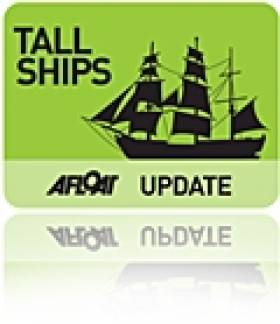Displaying items by tag: Dun Loaghaire Harbour Gun Salute
#PARADE OF SAIL – In preparation for this Sunday's Tall Ships climax of the 'Parade of Sail', a rehearsal 21 Gun Salute will take place today at 14.00hrs at the East Pier Battery, in Dun Loaghaire Harbour, writes Jehan Ashmore.
After the four-day festival ends on Sunday, the tallships are to depart from Dublin Port at 11am, led by the Naval Service LE Emer (P21) with the three hour long 'Parade of Sail' into Dublin Bay. The 40-plus fleet will set a course along a corridor bound for Dun Laoghaire Harbour before turning around and steering for the Baily Lighthouse on Howth.
To mark the sailing spectacle, the battery in Dun Laoghaire Harbour will perform the 21 Gun Salute at approximately 11.45hrs. The criss-crossing of the Parade of Sail route will provide great shore-based spectator vantage points along both east and west piers of the harbour and on Howth Peninsula.
Gun salutes are, by nature, a noise hazard and the public are advised to keep 'well clear of the area' during the time of rehearsal and the gun salute. Blank ammunition will be fired for both the rehearsal and the gun salute.
The battery is equipped with 12-pounder naval guns and they have traditionally been, and remain, the responsibility of the 2nd Field Artillery Regiment, McKee Barracks, in Dublin.





























































